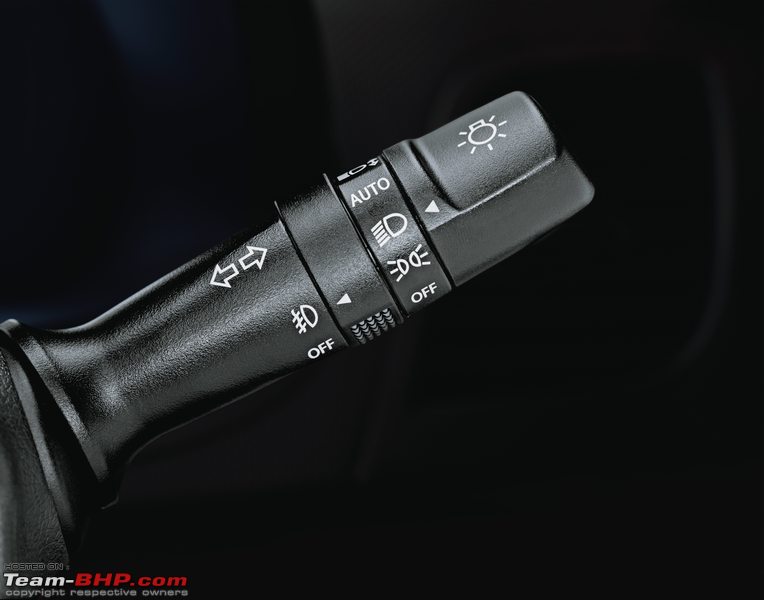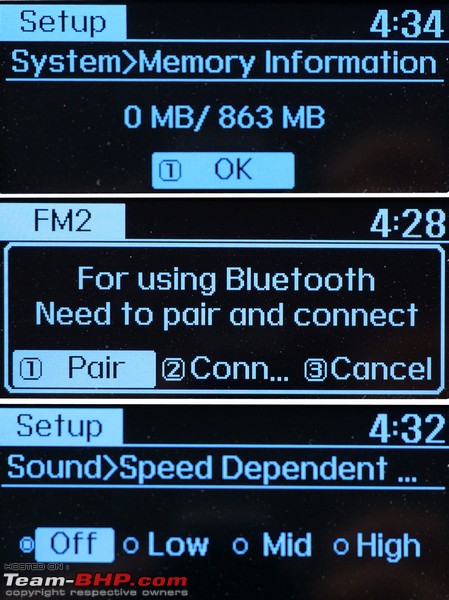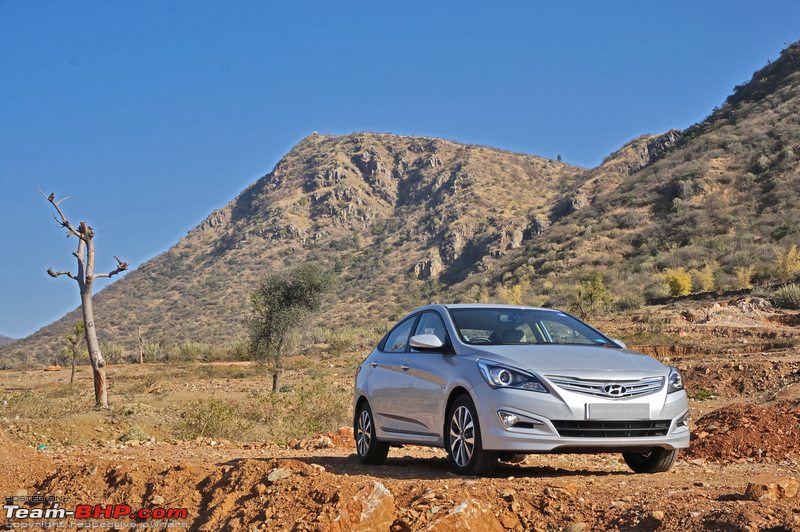
The first Verna to be sold in India was actually the Accent's next-generation replacement. Hyundai wanted to sell both simultaneously -
at different price points, of course - hence, the Verna nomenclature was introduced in 2006. The Verna had a tough time in the market. What started off as an inoffensive, boring sedan only got worse with its scary midlife makeover in 2010 (Verna Transform -
link to image). As one would expect, the ugly styling didn't go down too well with the masses, and it showed in the mediocre sales numbers. Even though the Verna had segment-first features like rear disc brakes, driver armrest, diesel + automatic combination (in 2009), the car failed to create an impact and remained a rather forgettable sedan.
Then came the 4th generation Accent - the model India knows as the Fluidic Verna. This car turned the tables around for Hyundai. Sales shot up & stayed above the 4,000 / month level for a long time, even touching 6,000 on occasion! The Hyundai Verna convincingly dethroned the Honda City from the top of the C2 segment charts. The fluidic styling (which some found overdone) became a hit with the masses. It was sold with 4 engine options (1.4L / 1.6L in both, petrol & diesel) to cover a wide range of price points, with optional automatic transmissions too. The Fluidic Verna boasted many segment-first features such as 6 airbags, a reversing camera, keyless entry & go, electric folding mirrors and more. Interior fit & finish were second to none. It did have weaknesses though. The rear seat was positioned too low, offering poor underthigh support. And just like its predecessor, high speed ride & handling were poor.
In Jan 2014, Honda launched the 4th-generation City...this time with a diesel engine & superior equipment levels. Almost overnight, the Verna went into limp mode. Its sales average for the first half of 2014 dived to 3,406 / month, while the monthly average over July - Dec 2014 was 2,283. Fierce competition also emerged from unexpected quarters, namely the Maruti Ciaz. A giant leap ahead of the SX4 in every way (including quality), the Ciaz has already sold over 6,000 copies in 2 of the 4 months of full production.
While the Verna still manages to outsell its European & American rivals by a healthy margin, it now occupies a distant 3rd place in the C2 sedan pecking order. No doubt, the Verna is also beginning to show its age, as its been around for 4 years now. When spending big bucks, Indians love the 'freshest', hence age can be a major deterrent to sales. The facelift we're reviewing here is possibly the last update to the Verna, before the next-generation model comes in (
link to scoop pictures).
Of late, Hyundai has started adding prefixes to its model names. Case in point, the 'Grand' i10 & 'Elite' i20. The Verna undergoes the same process, although not as convincingly. Hyundai calls this facelifted version the '4S' Verna. What does 4S stand for? Style, Speed, Sophisticated interiors and Safety

. For all you know, the next-generation Verna too will carry a fancy pretext before its name.

I love the styling of this facelift and can safely say that it's one of the handsomest cars from the Hyundai stable. We'll cover the exact design differences in the photo captions below. One welcome move by Hyundai is ABS coming in as standard across all variants. They have retained the top variant with 6 airbags too. However, the company has silently removed the rear disc brakes!! You might recollect that rear disc brakes were removed from the 2010 Verna Transform, but reintroduced on the 2011 Fluidic Verna. Apart from this, there are minor additions to the interiors which we'll list in the next post. On the mechanical front, Hyundai has tweaked the power steering and rear suspension.
So, what's new on the outside?
The face looks like a toned down version of the Sonata, rather than a reworked Fluidic Verna:

Side profile remains largely unchanged. The prominent waistline, swooping roofline, chrome door handles and 16" diamond cut alloy wheels are all the same as before:

Rear 3/4th view. Changes to the rear are a lot more subtle:
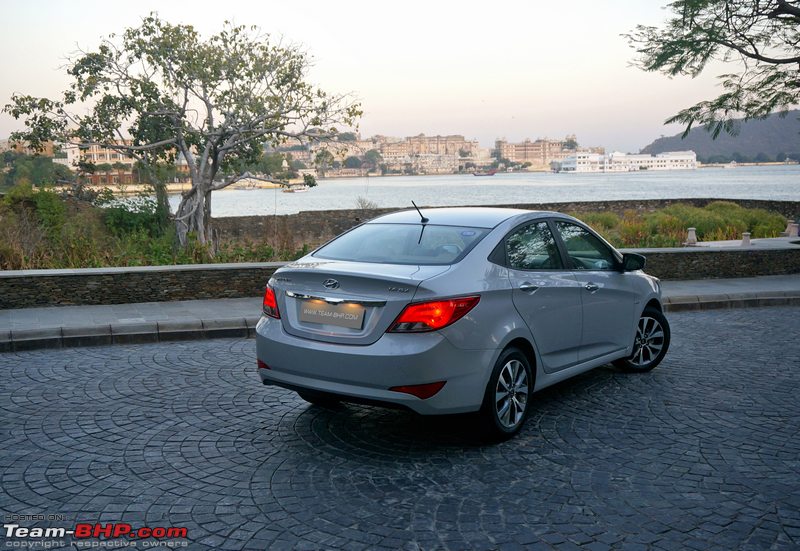
Notice how the
HYUNDAI badge has been removed:

Gone is the hexagonal mouth. Now replaced with a distinctive twin-slat chrome grill and trapezoidal air dam:
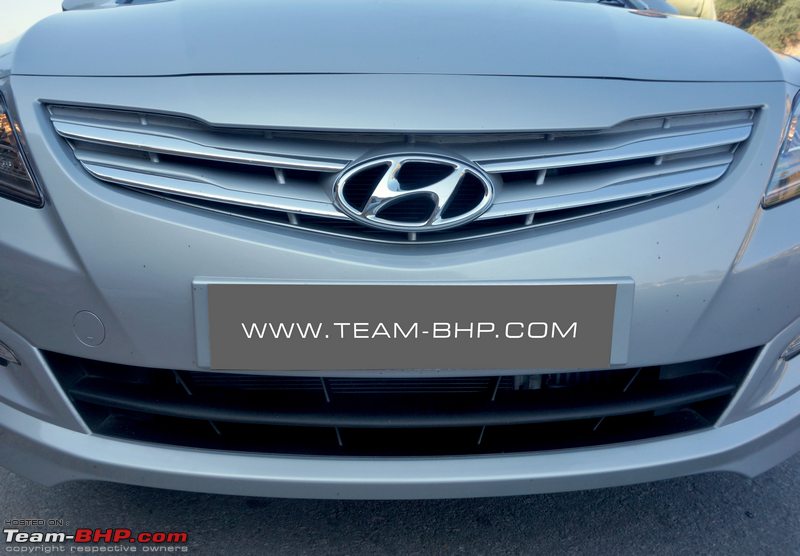
Stunning new headlamps. They remind me of the
Ciaz' unit for some reason. Notice how large the projector appears. It even has the eyelid we'd earlier seen in the
Elite i20:

'Boomerang' shaped foglamps in a different layout. The last time we heard the term 'boomerang' was when Maruti presented the Ritz' unconventional tail-lamps:

The bonnet has a sleeker design with subtle creases in the center, when compared to the older car's 'in-your-face' style:
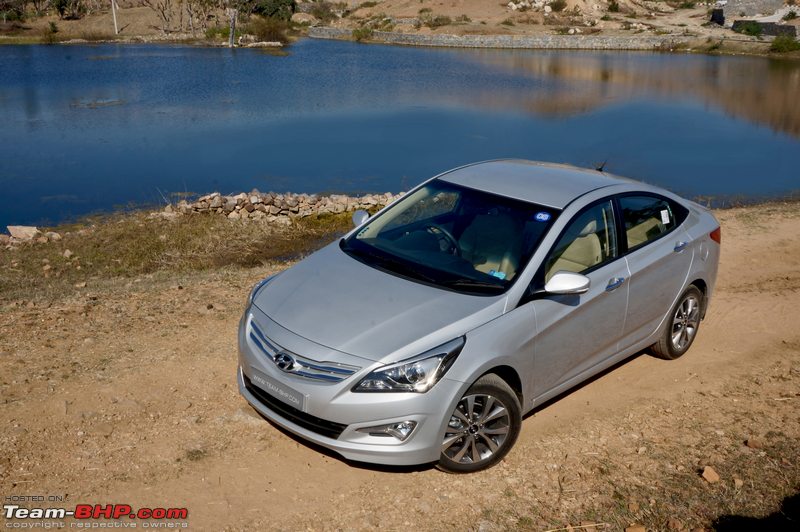
Unlike the li'l Grand i10, the mirrors don't fold/unfold when the car is locked/unlocked:
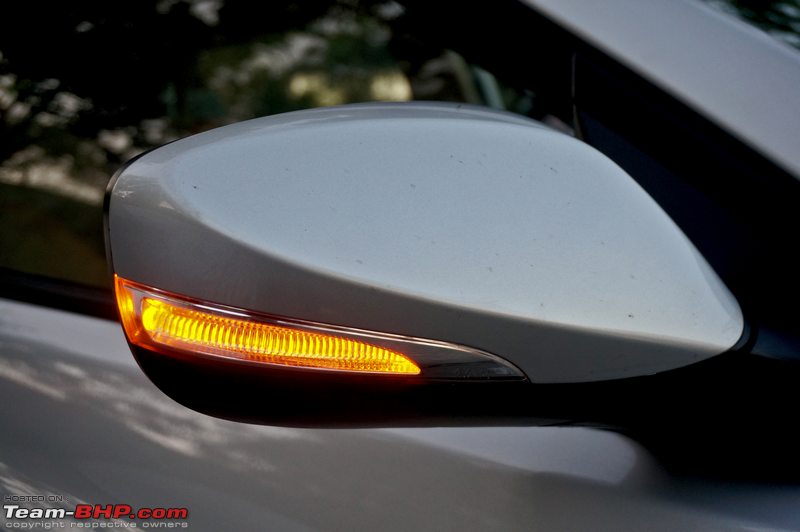
No passenger-side request sensor either:
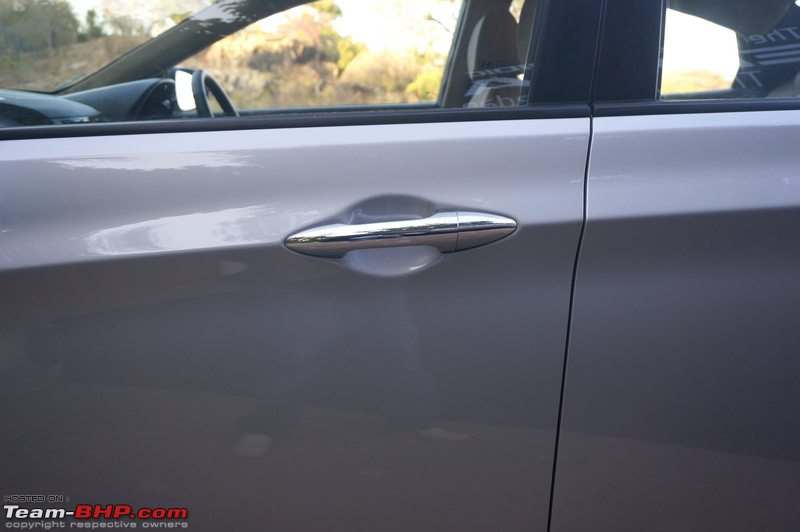
Rear disc brakes have been deleted from the equipment list. On the flip side, ABS is standard on all variants:
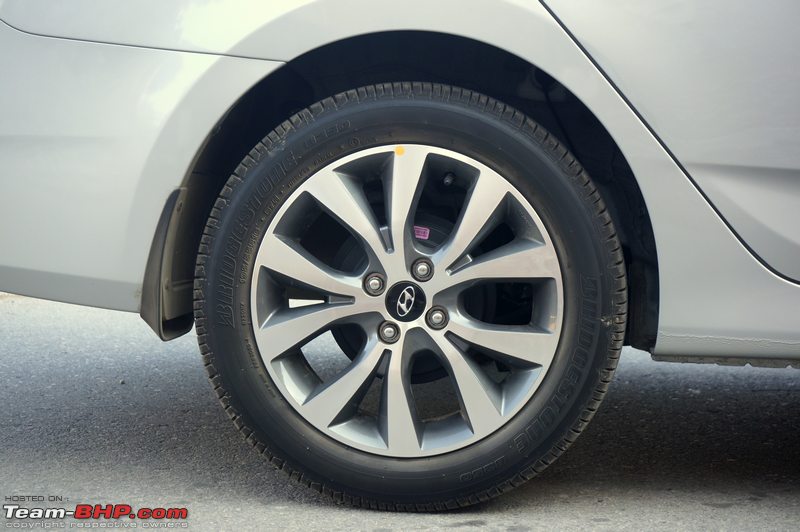
Roof antenna is smaller. Looks much better than the super long unit of the older car:

You'd need to be an informed car enthusiast to realise that the tail-lamps have different elements in them, lending that "LED" look:
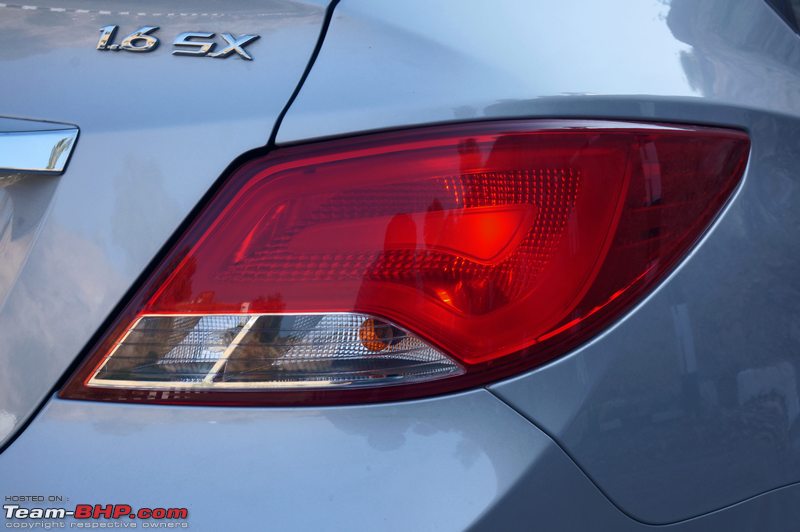
I like the new reflectors. Similar shape to the
CLA's tail-lamps:

Chrome tipped
dual muffler tips are history. The new bumper hides away the muffler tip. This black insert breaks the bulk of the bumper:
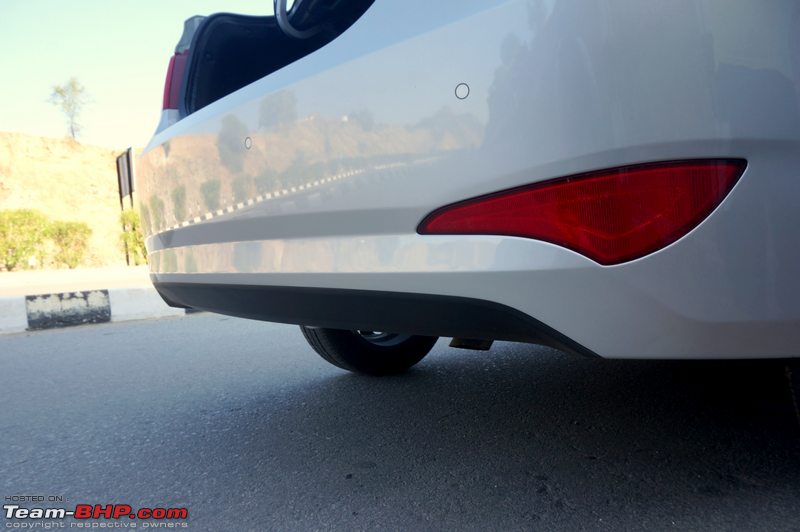
The challenger (Verna) vs the segment leader (City):
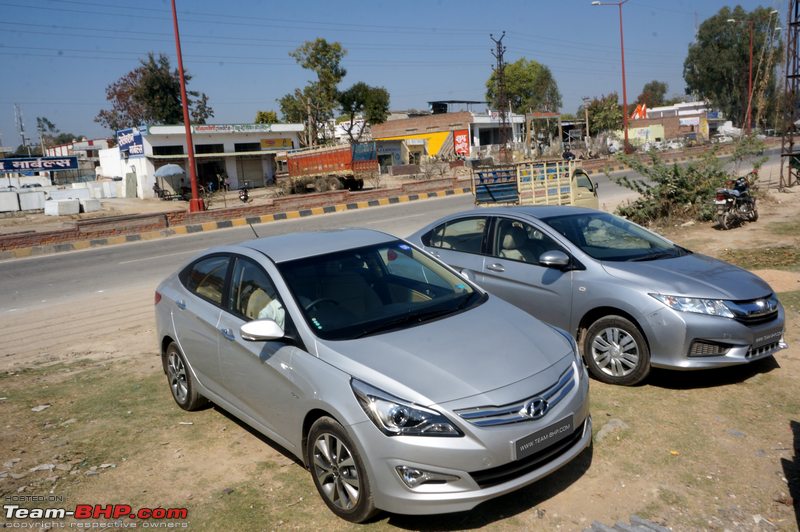
Only after these cars were parked together did I notice some similarity in their character lines:

 (36)
Thanks
(36)
Thanks
 (8)
Thanks
(8)
Thanks
 (26)
Thanks
(26)
Thanks
 (21)
Thanks
(21)
Thanks
 (59)
Thanks
(59)
Thanks

 (3)
Thanks
(3)
Thanks
 (4)
Thanks
(4)
Thanks

 (8)
Thanks
(8)
Thanks
 (1)
Thanks
(1)
Thanks
 (1)
Thanks
(1)
Thanks
 (3)
Thanks
(3)
Thanks
 (5)
Thanks
(5)
Thanks
 (3)
Thanks
(3)
Thanks
 (9)
Thanks
(9)
Thanks





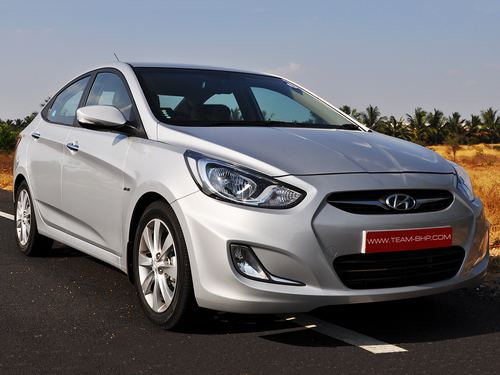

 . For all you know, the next-generation Verna too will carry a fancy pretext before its name.
. For all you know, the next-generation Verna too will carry a fancy pretext before its name.




















